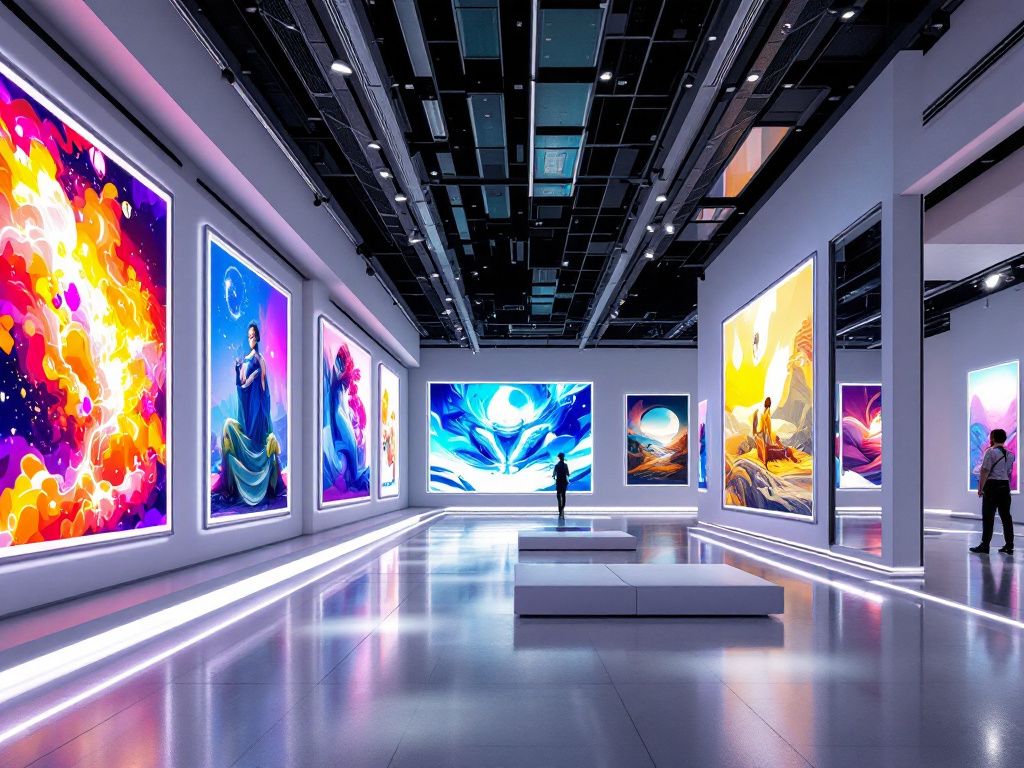Have you ever felt overwhelmed by the idea of preparing for a digital art show? With the increasing shift towards virtual exhibitions, it can seem daunting to ensure your event preparation is on point. The reality is, putting together a virtual art event involves more than just uploading your work online. You need an engaging “skin”—the look and feel of your digital expo. But how do you nail that without it feeling forced or artificial?
Many artists face this very puzzle, so if you’re scratching your head about how to get your exhibition ready, you’re in good company. Let’s chat about a few insights that might just change your mind about the whole digital art show experience.
Understanding ‘Digital Art Show Skin’
Think of “skin” as the appealing surface of your art show. It’s the first impression—the aesthetic layer that grabs your viewers before they dive into the depth of your work. Just like preparing a physical exhibition, it requires meticulous event preparation. It’s about deciding the right layout, flow, and ambiance that mirror your artistic message accurately.
Why Does Your Digital ‘Skin’ Matter?
Simple—it’s your digital handshake. It sets the tone and lets spectators know they’re about to experience something cool and well-thought-out. An effective skin not only holds your artwork but enhances it—almost like having invisible underlines highlighting the nuances of your art. Entrancing skins can mean the difference between captivated audiences or lukewarm clicks and hastened exits.
Steps to Get Exhibition Ready

Choose the Right Platform
Before sketching out your ideal exhibition skin, figure out where your digital artwork will live. Platforms like ArtSteps, Kunstmatrix, or even your own custom-built spaces can provide various tools suited for rich interactive displays or minimalist navigation—depending on your style. Mess around with a few options until one clicks with your overall vision of perfection.
- Explore Features: How do different platforms present navigation? Can guests zoom in and out easily? Do they support multimedia? These features can augment or diminish the show’s ‘skin’, impacting the overall experience.
- Test Usability: Ideally, enlist a friend or colleague to explore the platform on your behalf as surrogate viewers, catching kinks you’ve become blind to.
Design Your Digital Experience
Once settled on a platform, start designing the combined sensory experience. This is where you can literally shape the feel of your show:
- Layout: Decide on linear paths versus free-roam. Organized grids might give your artwork a clean lining, whereas asymmetrical setups create a relaxing flow.
- Theme: Cohesive color palettes and fonts matter just as much as gallery space. Take elements from your art into your theme; let them complement one another, enhancing the spotlight on each piece.
- Music & Sound: Sound can subtly drive mood and engagement levels. Picking the right ambient sound—like soft music or relevant audio verbiage—turns an online stop into a comprehensive experience.
Digital Operating Instruction
Convenience is always a sophisticated perk. Supply a simple walkthrough guide for your attendees, maybe in video format, ensuring them they’re one click away from resolving any techno glitches. There’s genuine user satisfaction when everything acts responsive.

Key Concepts to Engage Audiences
- Storytelling Presence: What’s the story your arts are trying to tell collectively? Thread a narrative through your selections, leading spectators from intrigue to climax.
- Interactive Features: Expand descriptions creatively. Try placing Easter Eggs within your exhibits with unspoken messages waiting to spring to life upon digital touch here and there.
- Inclusive Content: Accessibility matters. Provide text narration, or alternative content where possible, inviting broader audience subsets regardless of limitations.
Layering Visual and Text Content
Compelling visuals partnered with thought-provoking descriptions accentuate the show’s artistic breadth. Ensure that text used is effortlessly legible on screens and accompanied by visuals that don’t overpower it. A tableau might include short anecdotes or introspective queries to chum the waters of inquiring minds.
Fixing Common Mistakes
It’s all too easy to overlook finer details when hyper-focused on substantial aspects. Here’s a quick list to check off:
- Resolution Oversights: Poor image resolution detracts attention and credibility; validate all uploads are crisp, vivid.
- Clutter Minimalism: Resist overcrowding. A sparse arrangement speaks loudly, allowing individual works to breathe; sparcity evokes tension for parking viewer’s gaze longer.
- Technical Miscues: Prepare for tech mishaps beforehand. Regular updates, compatibility frenzies—stay ahead and ensure adaptability across multiple devices.
Preparing for Lauch Day

Much like the thrill of opening night for traditional exhibitions, your virtual launch requires precise event preparation and timing in communication outputs:
- Engage Pre-Launch Buzz: Persistent teasers invigorate anticipation. Launch a countdown on socials, hinting revelations worth waiting for.
- Show Opening: Host a lively virtual opening craft—a live Q&A session to celebrate inauguration while giving depth to viewers’ explorations.
- Afterglow Strategy: Cultivate post-show critique receptions. Feedback extends the activity’s lifespan far beyond conclusion, tying back into exposure elevation.
Revisiting Ideas
Thinking back to the visual sibling to real-space exhibitions, contemplating frequently gives inspiration on how segments synchronize. Relate back thematics that viewers previously lauded, whilst continually learning more about their evolving needs during these setups for next ventures to blossom considerably.
In conclusion, getting the ‘skin’ of your digital art show right isn’t about bending over backward to make something groundbreakingly avant-garde. More often, it’s about those elegant simplifications that embolden existing strengths by gaining an intelligent understanding of your tools. When it connects back naturally, when it magnifies rather than obscures, that’s when the magic happens.
Armed now with these considerations, experiment until it feels inherently ‘you’. Creating smoothly encompasses viewers long after inspection like the faint hug of floored brushstrokes gliding under digits repeatedly over time. Your virtual art show is bound to leave them amazed—and coming back for more. Happy showing!
Frequently Asked Questions
What are the key steps in event preparation?
Event preparation involves several key steps, including defining the event’s concept and objectives, determining the target audience and expected attendance, selecting a venue, and planning the logistical aspects such as budgeting, scheduling, and acquiring necessary permits. It also includes coordinating with vendors, arranging for speakers or entertainers, and ensuring compliance with health and safety standards[3][1][5>.
How do I choose the right venue for my event?
Choosing the right venue involves considering the number of expected attendees, the type of event, and the necessary amenities such as catering, audio-video needs, and space for conversations. It is also important to ensure the venue complies with health and safety standards and to plan for adequate clean-up procedures after the event[1][3][5>.
What is the importance of creating an event FAQ?
Creating an event FAQ is crucial as it helps attendees find solutions to common problems quickly and conveniently. It also reduces the time and effort required by the event team to address repetitive questions, allowing them to focus on more critical aspects of the event. The FAQ should cover key areas such as registration, ticket sales, check-in, and venue information[5>.
How should I promote my event to maximize attendance?
Promoting an event effectively involves setting up a simple registration form, creating a landing page, and using various channels such as email campaigns, social media, paid advertising, and partner promotions. It is also important to send reminder emails to registered attendees and to use relevant tokens to store event details for consistent communication[2][3][5>.
References










